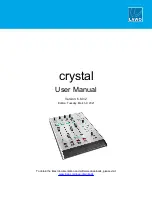
ENGLISH
BLADE APPLICATIONS
Use blades only in recommended applications.
• Grass/Weed Blade -
Use Grass/Weed blades
for cutting thick grasses, weeds, light to medium
vegetation, and thick-stalked growth such as reeds
and palm grass.
• Brush Blades -
Use Brush blades for cutting dried
brush, small saplings, and large weeds with thick
stalks.
• Clearing Blades -
Use Clearing Blades to cut
saplings, small trees, and thick, heavy brush.
Blade Cutting Problems
Binding - Blades may bind in the cut if dull or forced.
Binding can damage blade, and result in blade breakage
or injury from fragments and flying debris. If a blade binds
in a cut, don’t try to get it out by applying “up and down”
force to pry the cut open. Applying prying force to the
blade can bend the blade, and result in blade failure and
injury.
To free a blade that is bound in the cut,
stop
the engine,
and support the trimmer/brushcutter to keep stress off the
blade. Push the tree away from the entry point
of the cut to open the cut, and pull the blade
directly away from the cut in a straight-line
motion. Use caution when releasing the tree
to avoid being struck by spring-back or falling.
Inspect the blade for damage before
proceeding. Sharpen teeth if dull, or
replace blade if cracked, bent, missing
teeth, or otherwise damaged. (See "Blade
Sharpening," on next page for important
sharpening information
To prevent binding:
• Keep blades sharp
• Avoid excessive pressure during cuts
• Don’t exceed cutting capacity of blade
• Don’t use blades with damaged or missing cutting
teeth
• Don’t rock blades in cut
Grass/Weed
Blade
Brush Blade
Clearing Blade
Inspect jammed
blade for damage
Jammed
Open cut to free blade
with engine off
Turn
engine off!
34
OPERATION
Summary of Contents for SRM series
Page 50: ...ENGLISH NOTES 50...
Page 51: ...ENGLISH NOTES 51...
















































